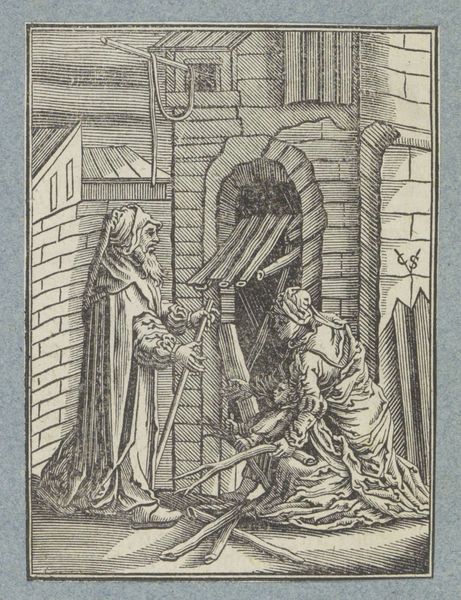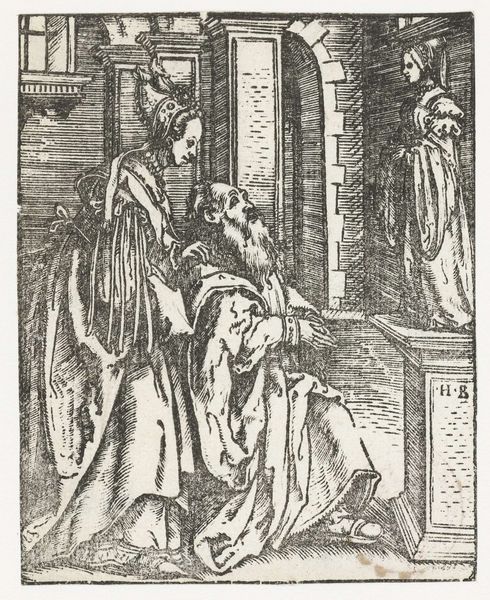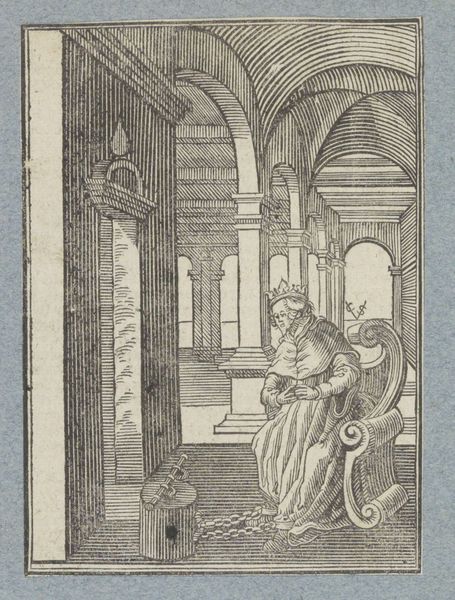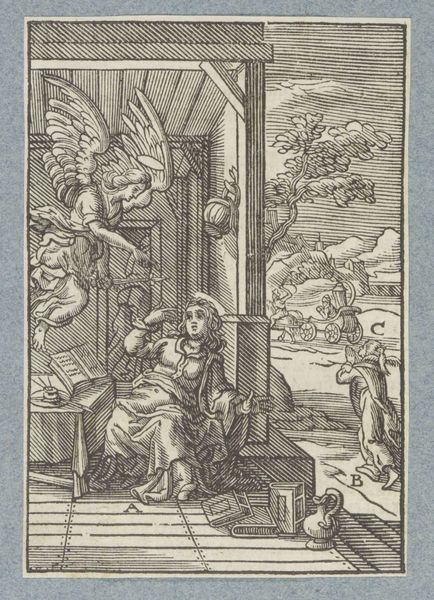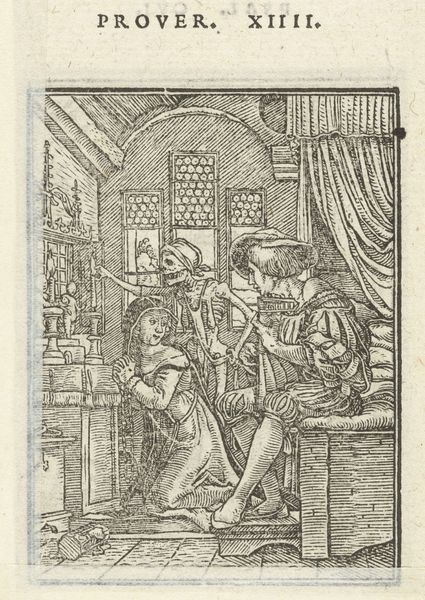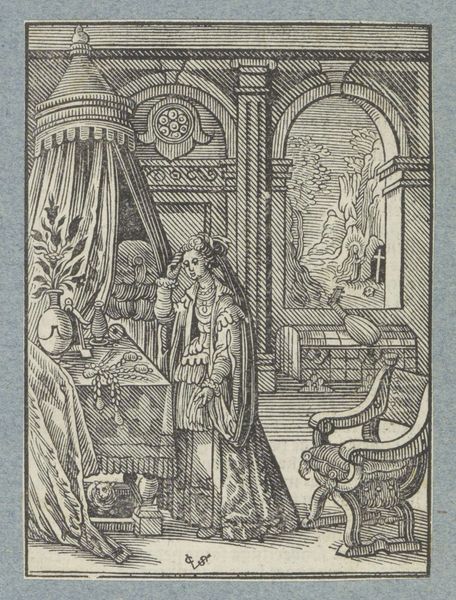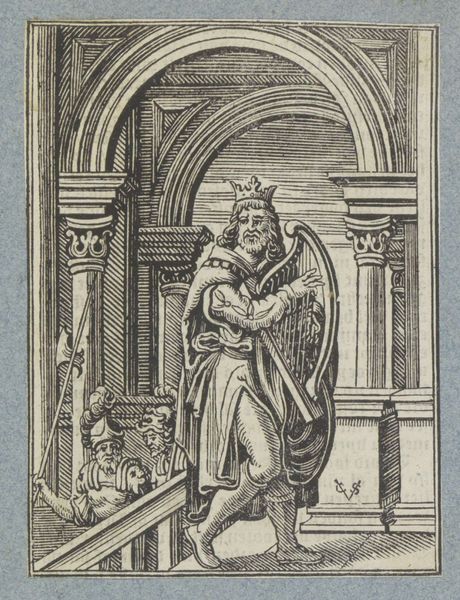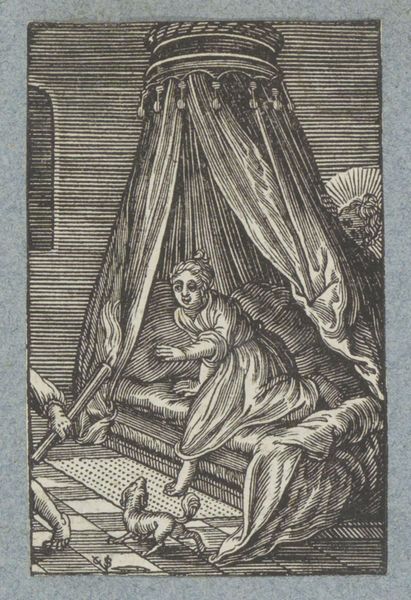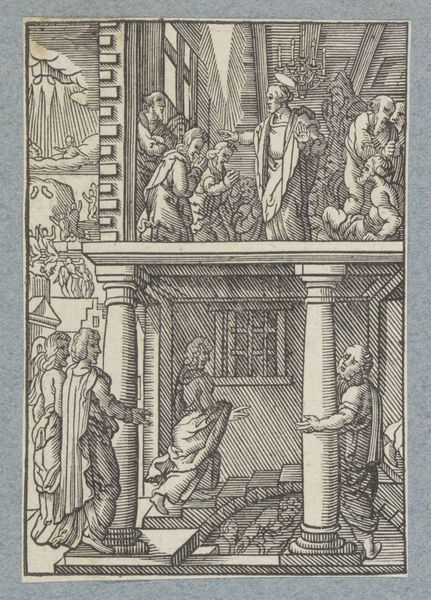
drawing, print, intaglio, paper, ink, pen, engraving
#
drawing
#
aged paper
#
narrative-art
#
baroque
# print
#
intaglio
#
old engraving style
#
sketch book
#
figuration
#
paper
#
personal sketchbook
#
ink
#
pen-ink sketch
#
pen and pencil
#
line
#
pen work
#
sketchbook drawing
#
pen
#
history-painting
#
storyboard and sketchbook work
#
sketchbook art
#
engraving
Dimensions: height 111 mm, width 83 mm
Copyright: Rijks Museum: Open Domain
This print, Ester bidt en vast, was made by Christoffel van Sichem II, likely in the early to mid-17th century, using woodcut. Look closely, and you can see how the artist painstakingly carved away at the block of wood, leaving behind the lines that would define the image. The linear quality of the print is largely determined by the character of the wood itself. Woodcuts like this one played a vital role in disseminating information and imagery to a wide audience, prior to industrialization, and before the advent of photography. They allowed for the relatively inexpensive reproduction of images, making them accessible to people of different social classes. The labor-intensive process of woodcutting also speaks to the value placed on skilled craftsmanship during this period. It reminds us that even seemingly simple images can be the product of great skill and dedication. Appreciating the material and the making involved helps us see this print not just as a picture, but also as a product of its time, deeply connected to the world of craft, labor, and social exchange.
Comments
No comments
Be the first to comment and join the conversation on the ultimate creative platform.
